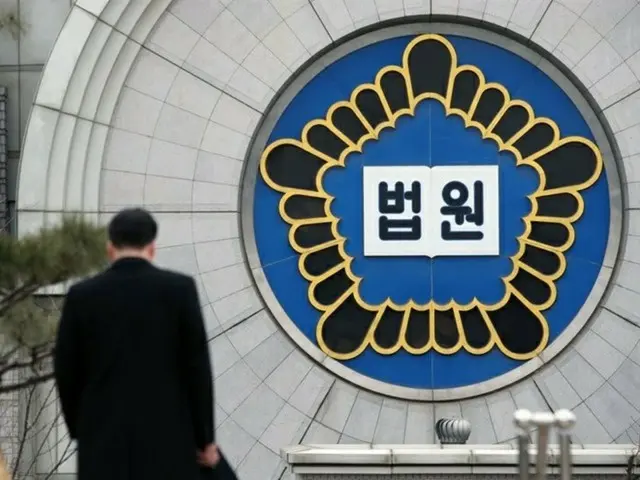The order was issued by the North Korean Cultural Exchange Bureau, which said, "We will use this huge disaster as an opportunity to create an atmosphere similar to the struggle to uncover the truth behind the 2014 Sewol ferry disaster, and we will work with all
"I ask you to actively engage in organizational activities to maximize the anger of all sectors of society," he said in a message sent around November 15, 2022 by the then Democratic Labor Union Organization Dispute Bureau.
The indictment was sent to Seok (53), the head of the company, who is accused of engaging in espionage under the guise of union activities under orders from North Korea and contacting North Korean agents in China and Cambodia.
This was revealed in the trial of a former executive of the Korean Confederation of Trade Unions who was given a heavy sentence in 2016. On the 24th, according to a South Korean legal official, he was accused of receiving and acting on orders from North Korea more than 100 times over several years.
On the 6th of this month, the Suwon District Court sentenced Seok, who was arrested and indicted in May last year, to 15 years in prison. In addition to receiving orders and sending reports, he was also charged with robbery of facilities and runways at Pyeongtaek and Osan Air Bases.
He was found guilty of obtaining and collecting state secrets, including files containing footage and photographs of missile launch pads.
The court said, "North Korean agents sympathized with the great pain of the families of the victims of the Itaewon tragedy.
"It is inconceivable that the order was issued out of condolences," he said, adding, "The contents of the order and report all lead to one goal: the overthrow of the free democratic system of the Republic of Korea. The defendants have not fully understood the situation."
"Even though the court understood the situation, it went along with it for a long time," he said.
The legality of the evidence was at issue. In particular, in cases of suspected espionage, the defense often denies all statements and claims that the evidence was fabricated or illegally collected, so the validity of the evidence is a determining factor in determining guilt or innocence.
For this reason, in such cases, it is common for the prosecutors who participated in the investigation stage and are familiar with the process of collecting evidence to also attend the trial.
If it becomes impossible for investigating prosecutors to participate in trials by issuing acting prosecutors, this will inevitably have an impact on trials of suspected espionage cases.
The court cited about 30 pages of the 239-page first-instance ruling as evidence submitted by the prosecution.
The evidence included various classified documents. The National Intelligence Service's investigation showed that Seok and others had been in contact with North Korean agents in Cambodia, Vietnam and other countries since 2017.
The evidence included video footage taken by investigators, as well as written orders and reports exchanged with operatives and others from 2018, and files extracted through forensics from a smartphone.
The reason for the large amount of evidence presented is said to be that in espionage cases, it is virtually impossible to prove suspicions based on the statements of the defendant or those involved.
This is because some people refuse to give statements, and because witnesses are overseas, it is often difficult to cooperate with the investigation. A prosecutor familiar with public security investigations said, "In espionage cases, we cannot rely on statements, so we have to secure them through seizure and search.
"In most cases, guilt must be proven based on digital evidence, and it is especially important that digital evidence is recognized as admissible."
The court also ruled that the evidence was fabricated, did not come from his own cell phone, or was collected illegally and cannot be used as evidence.
After examining each of the arguments that the evidence was unusable, the court stated that the evidence was not illegally collected.
Regarding the argument that videos and photos cannot be used as evidence, the court said, "Filming in a public location cannot be determined to be a compulsory investigation, and there is no reason to deny the admissibility of evidence obtained through filming.
The prosecution not only submitted the results of an investigation by the National Institute of Crime Science to prove that the photo files and other materials were not fabricated, but also submitted the actual presence of forgery.
At the trial on August 28 last year, an investigator from the National Intelligence Service appeared as a witness and testified that the program hidden in Seok's SD card had been stolen.
There was also a scene where it was booted up directly in court. The code found on another external hard drive owned by Seok, "1rntmfdltjakfdlfkehRnpdjdiqhqoek
Using the "Korean Confederation of Trade Unions" program, the order that Seok received from North Korea on May 7, 2020 was deciphered. The order included a command to keep track of the trends in the election of Korean Confederation of Trade Unions officials and report on them.
The letter included a request to report to the Supreme Court on the espionage charges. Seok is said to have followed the instructions and compiled the election strategies of each faction and reported them. The court found this part of the allegations to be true and did not sue the Supreme Court for espionage.
The report said that Sok frequently reported the progress of the operation to North Korea and sent messages of loyalty stating, "Kim Jong Un is the sole leader of the South Korean revolutionary movement," and "I will give everything to him."
The "pledge of sincerity" was also made clear.
2024/11/25 06:18 KST
Copyrights(C) Herald wowkorea.jp 104

